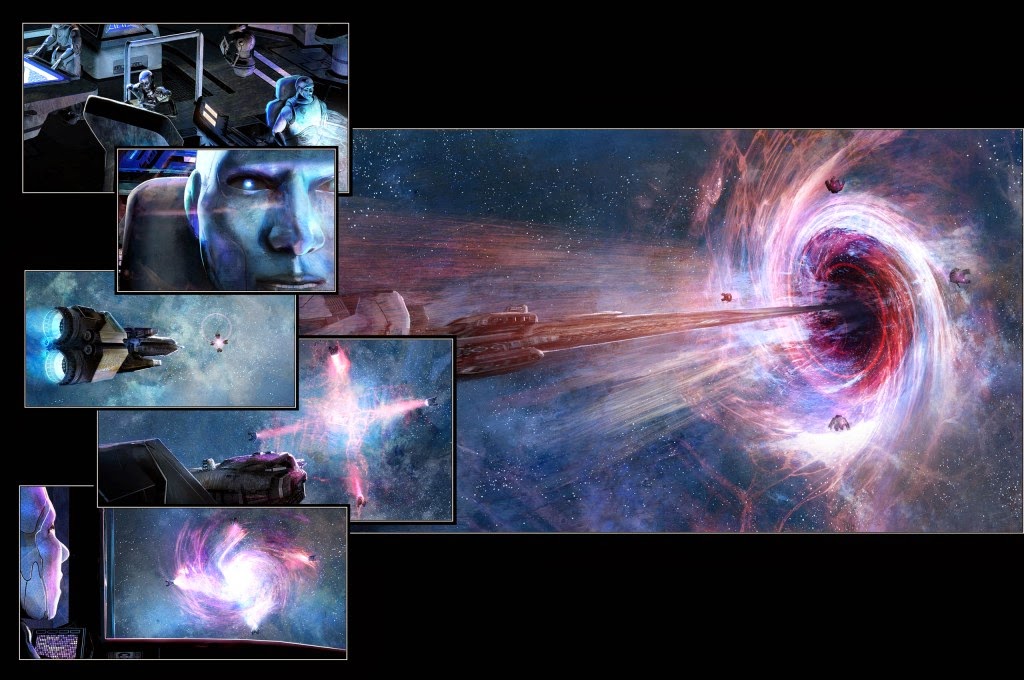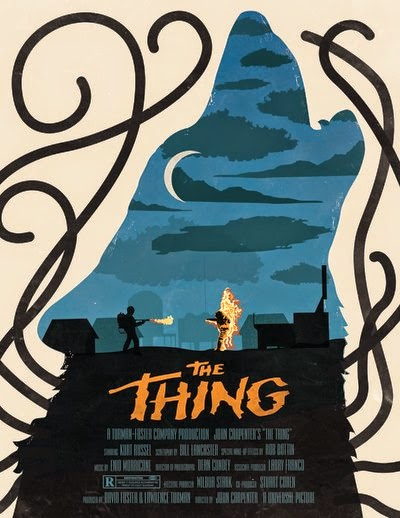Now there are dirty jobs out there in the
universe - garbage scow, xeno-coroner, warp engine lube technician. Likewise,
any soldier or space merchant faces his share of danger. But there are also
jobs that are both insanely dirty AND dangerous, and which only get done
because of the small chance of a large payoff they offer. Here are the most
notorious ‘Double D’ jobs in space:
Ordinance
Recovery
When local pisspot baronies start an
interplanetary shootout, there are those who see it is a chance to turn a
profit. Missiles or rockets fail in a number of ways – software glitch, fuel
leak, chaff or jamming. Unexploded ordinance such as missiles are worth a nice
bit on the black market, but are also highly illegal to resell. Some scavengers
go in ‘hot’ and sweep in while the battle rages, clamp onto a juicy piece of
ordinance and jet out before they become a target themselves, fingers crossed
that their cargo doesn’t go supernova. Others go in ‘cold’, picking through debris
after the war is won, carefully defusing and disassembling the rockets and
their payload before safely storing them and moving on. Either way has an equal
chance of making you rich or dead.
Bountyhunting
Space is so unimaginably huge that anyone
not looking to be found can easily and effectively do so if they stay on the
move. Cops are usually limited to peace keeping and beating down the locals,
while mobile criminals cross jurisdictional lines and make things messy for the
law. That is why most places either sign on to the bounty hunter treaty or else
turn a blind eye to their activities. The big problem is the restriction
against lethal force unless fired upon, which means that you better either get
the drop on your prize with whatever netgun or stunner you’re using, or else
hope they miss once before you gun them down. It doesn’t make it any easier
that the most dangerous and most rewarding bounties are wanted alive.
Bughunt
There are all kinds of treaties protecting
indigenous life, but for an unscrupulous corporation or a desperate group of
refugees looking for a new home, extermination of local flora and fauna might
be the only option. The sounds good on paper, but life has a way of carrying
on, or at least taking a lot of other lives with it into oblivion. Then there’s
the advanced life that can send killers right back at their employers…
Wildlife
Transport
As hard as it is just killing off alien
life, imagine the challenges of capturing and carrying it somewhere. That tame-looking
spacecat you’ve lured into your hold doesn’t seem so cute when it grows
tentacles then starts teleporting around the ship eating crew like ruffled
potato chips. Add to that your violation of numerous space treaties and local
laws in transporting or delivering the critter and you’ve got a galaxy strength
headache to deal with.
Test
Piloting
As dangerous as test piloting was back in
the day of simple aeronautics, with the reality-warping engines used nowadays,
things get a whole lot weirder. Pilots can return before their departure, or
come back mad from an eternity in the warp lanes, or else sound crazy claiming
that the world is the same except for one detail like the color of the skies or
that people don’t have forked tongues like they used to. Maybe the ones that
just disappear are luckier.
Rat
Catching
Imagine an abandoned spaceport the size of a
moon needing to be cleared out in two weeks. Now imagine the number of hiding
places in such a structure. The rats in the walls could be any number of
things, from disgruntled employees, to squatters, activists for some cause,
alien critters, rogue AI, or even ghosts. Since most of these jobs are on a
timetable, your chance of going home empty handed are higher than those of
going home in a box – but not by much.
Artifact
Transport
Just like the Fermi Paradox told us, other intelligences
rose and fell long before humanity spread out into the cosmos, and from time to
time we find their relics, and even their junk. The problem is that we’re still
in diapers in terms of technology, and can’t tell if we’ve picked up the cure
for cancer or a loaded gun. Artifact transporters are subject to spontaneous
mutations, space-time distortions, and whatever malevolent designs the defunct
creators of the artifact set in motion. Add to this that on the off-chance you
do get a useful artifact AND figure out how to use it, every space pirate,
scavenger, and spacy frigate you encounter will be aiming to take it from you.
Space
Anomaly Survey Team
Space is just plain weird at times, filled
with anomalies that don’t follow any of the laws of physics, and thumb their
nose at reality. Shrinking black holes, anti-matter planetoids, heavy midget
planets, and gas or liquid mega-giants without the gravity they’d need to exist
are all out there for the finding. They can make your hull disappear, crush you
like a tin can, or have you reliving moments from your childhood. Figuring out
what makes these anomalies tick, or better yet finding a way to use them for
profit, can make the effort and risk pay off in spades.
If you and your crew are in need of a quick
payoff or a huge push towards the good life, these jobs are for you. Just
remember that they won’t be easy, clean or safe. You were warned.












